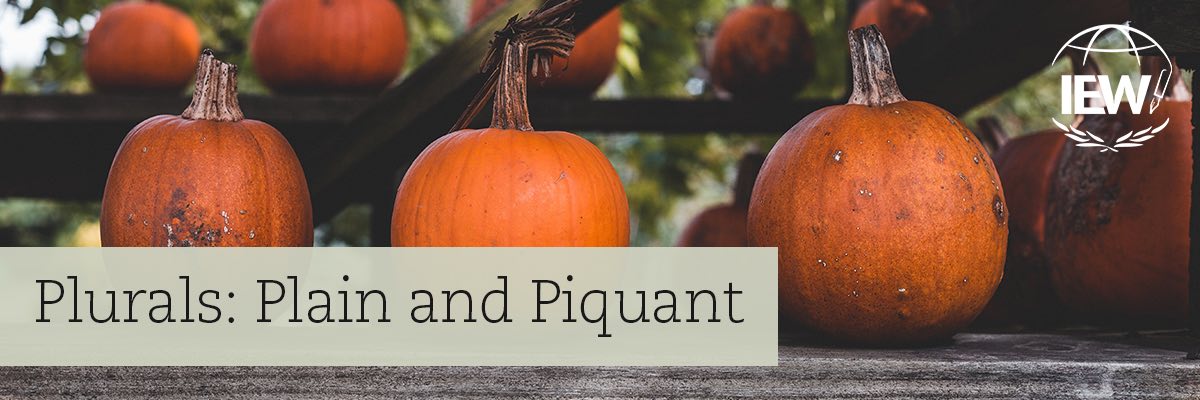
When adding a plural suffix onto a base word, often the plain vanilla approach works just fine. You have two options: -s or -es. Determining which one to apply is generally a simple matter. Add the -s to most words, and reserve the -es for those base words whose endings make it difficult to differentiate the /s/ sound. Words that end in S, X, Z, SH, CH, or TCH all call for the -es. Using this framework, then, you can see why “pumpkin” turns into “pumpkins” and “dress” turns into “dresses.” This little tidbit comes in quite handy for those of us who send out an annual holiday card. In my family I wish everyone merry Christmas from the Mausers, but if you have the last name of Harris, you would wish everyone well from the Harrises. Pay particular attention to the fact that neither name uses an apostrophe. That’s because their use in names indicates possession, not pluralization.
There are a few other situations in which the -es suffix is called for. One of those is when you are applying a suffix to a base word ending in the letter O. This works for most words although there are a few exceptions. Consider the base word “potato.” You may bake just one potato, but if you need to peel several for your family’s Thanksgiving dinner, you will be handling several potatoes. Another situation that calls for adding the -es suffix is if your base word ends in the letter Y. In that case you generally change out the Y for an I and then add the -es. In that manner, one puppy becomes many puppies. (And aren’t more puppies a grand thing?) Again, there are a few exceptions, but most of the time this rule works nicely.
While these rules apply to the more “plain vanilla” words, there are some more piquant words that follow different pluralizations. Often these words are borrowed from other languages, such as Latin. Take the word “curriculum,” for example. To make it plural, you can write it either as “curricula” (its Latin spelling) or the Anglicized version, “curriculums.” If the plural of a word ends in -a or -i, it is likely hailing from Latin.
But what about those oddball words? Why, for example, is the plural of “mouse,” “mice”? And what exactly is the plural of “moose”? (Hint, it’s “moose.”) Why don’t they follow the same pattern? The answer is that essentially it comes down to their etymology coupled with gradual changes in spelling over time. Here is a chart listing a few commonly confused plural words:
|
Singular |
Plural |
|
moose |
moose |
|
mouse |
mice |
|
octopus |
octopuses |
|
pants |
pants |
|
scissors |
scissors |
|
sister-in-law |
sisters-in-law |
|
deer |
deer |
|
hippopotamus |
hippopotamus or hippopotami |
|
fish |
fish or fishes* |
*Generally speaking, it is acceptable to use “fish” as a plural in all situations. However, to be as precise as possible, the plural “fish” refers to a grouping of fish of the same species whereas the plural “fishes” refers to a grouping of fish of different species.
When you take base words and combine them with suffixes or prefixes, you are engaging in morphology. Morphology, which is the study of meaningful parts of language and how they combine to make words, is a great way to build comprehension, strengthen spelling, and increase vocabulary in your students. A great place to begin your study is with the plural suffixes.
|
Jennifer Mauser has always loved reading and writing and received a B.A. in English from the University of Kansas in 1991. Once she and her husband had children, they decided to homeschool, and she put all her training to use in the home. In addition to homeschooling her children, Jennifer teaches IEW classes out of her home, coaches budding writers via email, and tutors students who struggle with dyslexia. |

